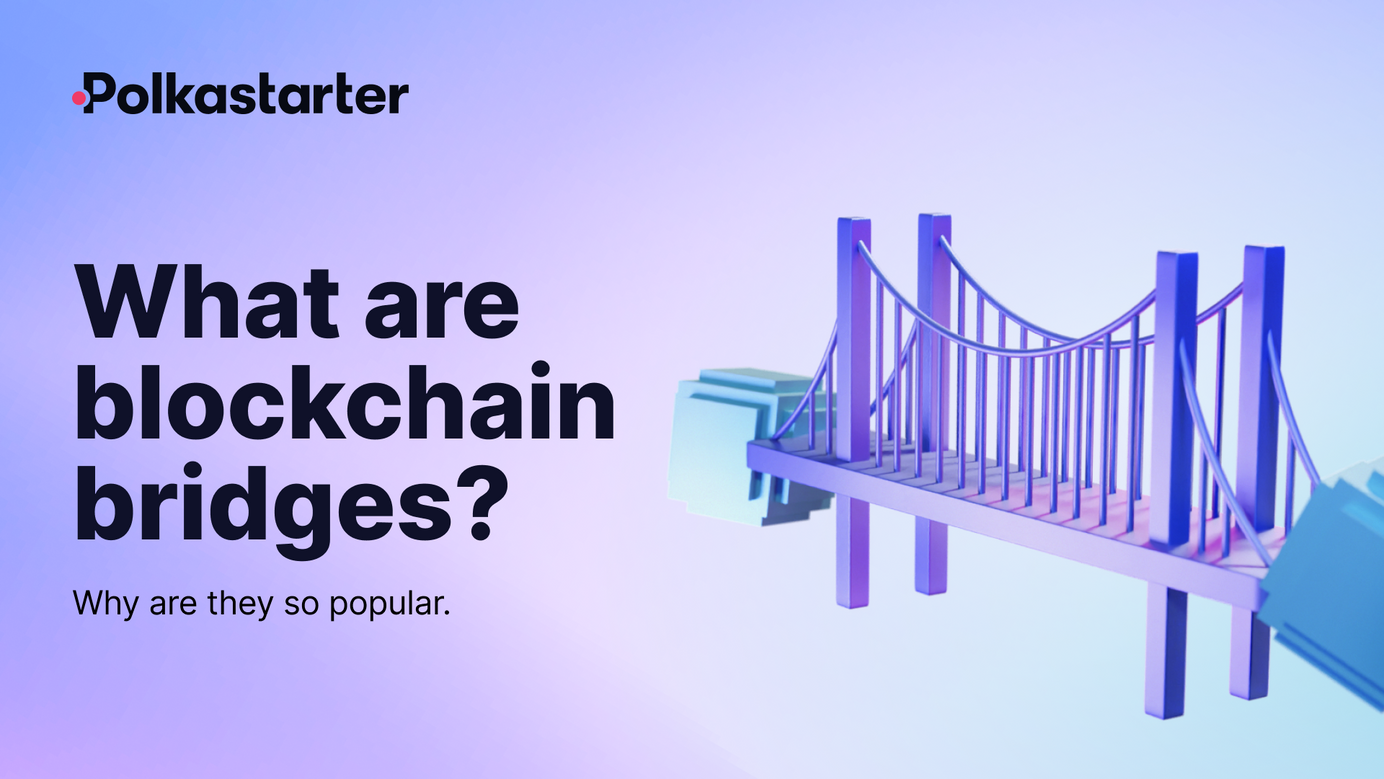
What Are Blockchain Bridges and Why Are They So Popular?
Brooklyn? Golden Gate? Forget the bridges you knew and welcome the bridges of the future.
Bridges, as we’ve known them for years, are man-made structures carrying a road, path, or railway, across a river, road, or other obstacles. Blockchain bridges might now use the same amount of steel or be that instagrammable, but they essentially serve the same purpose — they create a communication pathway between two endpoints while resolving an issue.
What is a blockchain bridge?
A blockchain bridge, also known as a cross-chain bridge, connects two blockchains allowing users to send cryptocurrency from one chain to another. Basically, if you have token on Cardano, but want to spend it on Ethereum, a bridge allows you to move them from one chain to the other one. Please note that blockchain bridges are independent entities that don’t belong to any blockchain.
One of the biggest cryptocurrency challenges is their inability to work together. Let’s demonstrate with an example. Before 1 January 1999 and the Euro (€) introduction, all European countries operated with their own currency:
- Germany — German Deutschmark
- Greece — Greek drachma
- Ireland — Irish pound
- Italy — Italian lira
What did that mean for people that wanted to travel from country to country? Exchanging their home-country currency to their destination’s currency. You couldn’t show up to Italy and pay with the Greek drachma. Take the same logic and apply it to crypto. Bridges are not what exchanges used to be back in the day. The fees and processes associated with exchanging one crypto for another are both high and time-consuming.
Without bridges them, you’d have to convert Cardano to Ethereum on a trading platform, withdraw it to a wallet and then deposit it again to another exchange. This would take considerable time while you incur insurmountable fees in the process.
How do cross-chain bridges work?
In most cases, the same token is being "transferred" from one chain to another one. However, actually this is not how bridging really works. In most cases the tokens are locked in a smart contract on the source chain and then a corresponding amount of tokens minted on the destination chain.
In another use case, bridges can also "just" enable smart contracts on different chains to communicate with each other.
The crypto involved in the transfer does not move anywhere. What happens is that the amount you want to transfer gets locked in a smart contract while you gain access to an equal amount of the destination crypto.
The blockchain bridge Catch-22: a centralized mechanism for a decentralized future?
If we had to pinpoint what makes blockchain technology so promising and unique, that would be decentralization. The ability to remove the middleman, authority, or organization from any financial transaction, eliminating any supervision or decision-making from them.
If that’s the goal, don’t bridges sound like centralized mechanisms? Users need to give up control of their coins, trusting a third-party system to convert them. Bridges are categorized on the trust mechanism they have in place. What that means is whether they are centralized or decentralized.
Trusted bridges
Trusted (centralized) bridges require users to keep funds on the source chain with pre-selected validators. In this case, custodians must confirm user deposits, lock up tokens, and mint tokens on the destination chain.
Trustless bridges
Trustless bridges are considered by many the Holy Grail for blockchain interoperability as they operate in a decentralized environment. Validators are not randomly selected but rather receive incentives to maintain the bridges. Here, trustless bridges work on mathematical truths and are devoid of human errors, corruption, or random mistakes.
Here are some of the bridges on the market at the moment:
- Avalanche Bridge
- Binance Bridge
- Portal Token Bridge (formerly Wormhole)
- Celer cBridge
- Polygon PoS Bridge
- Tezos Wrap Protocol Bridge
Recap: benefits of cross-chain bridges
Bridges are becoming increasingly popular in the crypto space for many reasons. Here are some of the most prominent.
- Enable communication between blockchains
- Quickly and efficiently transfer assets (tokens) between networks
About Polkastarter
Polkastarter is the leading decentralized fundraising platform enabling crypto’s most innovative projects to kick start their journey and grow their communities. Polkastarter allows its users to make research-based decisions to participate in high-potential IDOs, NFT sales, and Gaming projects.
Polkastarter aims to be a multi-chain platform and currently, users can participate in IDOs and NFT sales on Ethereum, BNB Chain, Polygon, Celo, and Avalanche, with many more to come.
